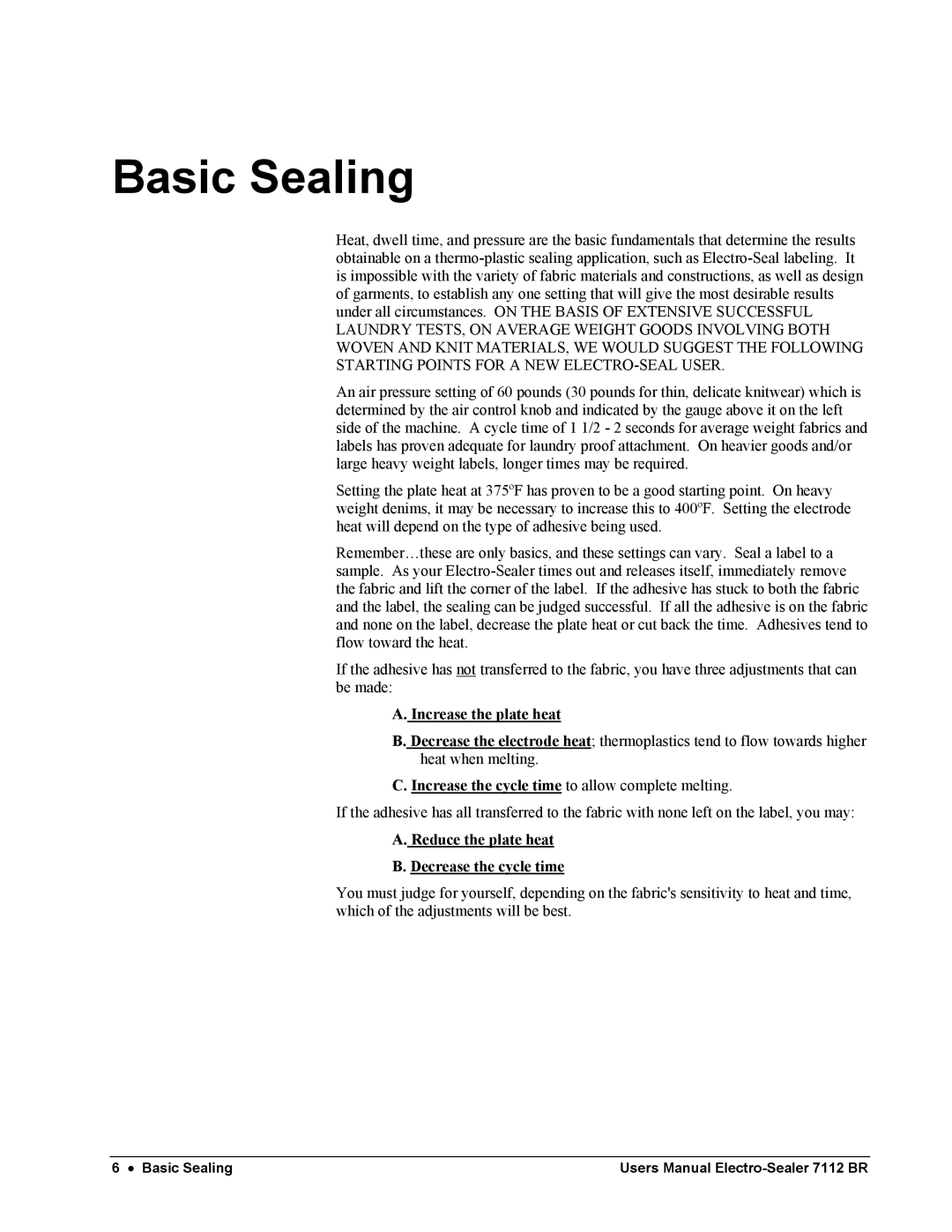7112 ff, electro-sealer specifications
The Paxar electro-sealer, model 7112 FF, is a state-of-the-art packaging solution designed for high-efficiency label application and sealing. Renowned for its precision and reliability, the 7112 FF is an essential tool in various industries, including food, pharmaceuticals, and manufacturing, where accurate labeling is paramount.One of the standout features of the Paxar 7112 FF is its advanced sealing technology. The electro-sealer utilizes high-frequency electromagnetic energy to create secure bonds between labels and packaging materials. This method not only enhances the durability of the labels but also reduces the risk of peeling or detachment during transportation and storage.
In terms of design, the 7112 FF is compact and user-friendly. It features an intuitive control panel that allows operators to easily configure settings, monitor performance, and troubleshoot any issues that may arise. The device supports various label sizes and materials, making it versatile for different packaging requirements. Additionally, the sealer can be integrated seamlessly into existing production lines, optimizing workflow efficiencies.
Another significant characteristic of the Paxar 7112 FF is its speed. Capable of sealing numerous packages per minute, this electro-sealer is designed to meet the demands of high-volume production environments. Its quick changeover capabilities allow operators to adapt to varying packaging sizes and formats with minimal downtime, ensuring smooth operation throughout the day.
The 7112 FF also incorporates safety features to protect both the machine and the operators. Overload protection systems prevent potential damage during operation, while the machine's construction meets stringent safety standards. This emphasis on safety not only enhances the operational environment but also instills confidence in users.
Furthermore, the Paxar electro-sealer 7112 FF is engineered for energy efficiency. It reduces energy consumption compared to traditional sealing methods, making it an environmentally friendly choice for businesses focused on sustainability. This aspect is increasingly important in today’s market, where companies are encouraged to adopt greener practices.
In conclusion, the Paxar electro-sealer 7112 FF stands out for its innovative sealing technology, user-friendly design, high-speed capabilities, robust safety features, and energy efficiency. It represents a leap forward in label application and sealing solutions, delivering reliability and performance that businesses can trust. With its ability to adapt to diverse packaging needs, the 7112 FF is an invaluable asset for any production line requiring meticulous labeling and secure sealing solutions.
